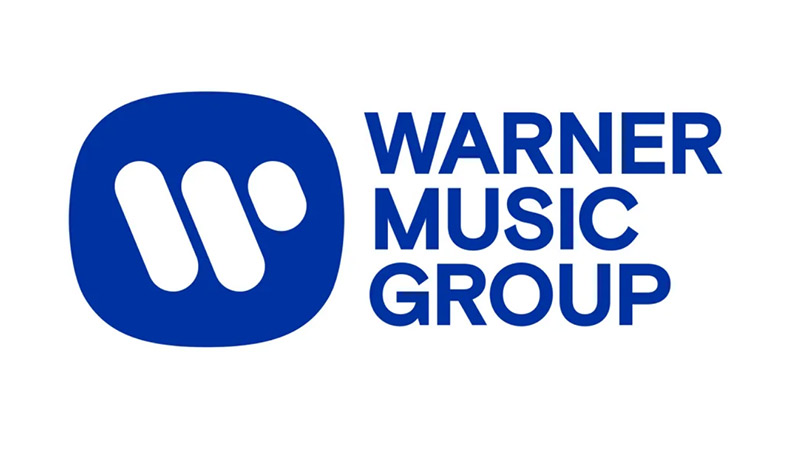
Warner Music Group Corp. Continues To Print Profits – Fiscal 1st QTR Report.
Warner Music Group Corp. today announced its first-quarter financial results for the period ended December 31, 2023.
“These results reflect the impact of our chart-topping artists, hit-making songwriters, iconic catalog, and laser focus on execution by all our teams,” said Robert Kyncl, CEO, Warner Music Group. “As we deliver our plan to accelerate our growth, we are becoming more efficient, increasing operating leverage, and freeing up more funds to invest in music and tech, which in turn will drive further sustainable growth.”
“Our strong Q1 results reflect double-digit revenue and Adjusted OIBDA growth, as well as robust operating cash flow conversion,” said Bryan Castellani, CFO, Warner Music Group. “The strength and resilience of our business was highlighted by an acceleration in Recorded Music streaming growth and continued momentum in Music Publishing, which saw its fifth consecutive quarter of increasing revenue growth. With a healthy and growing music ecosystem as our backdrop, we’re intensifying our focus on the highest-return opportunities while creating efficiencies across our business.”
Revenue was up 17.5% (or 15.9% in constant currency). As disclosed previously, the quarter included $68 million from a licensing agreement extension for an artist’s catalog (the “Licensing Extension”) in Recorded Music licensing revenue and the impact of the termination of the distribution agreement with BMG (the “BMG Termination”) in Recorded Music digital revenue, which resulted in $13 million less revenue compared to the prior-year quarter. Additionally, the quarter included $27 million of incremental revenue from a renewal with one of the Company’s digital partners that resulted in upfront revenue recognition in the quarter (the “Digital License Renewal”) in Recorded Music streaming revenue. Excluding the Licensing Extension, the BMG Termination and the Digital License Renewal, total revenue was up 12.1% (or 10.6% in constant currency).
Digital revenue increased 16.0% (or 15.1% in constant currency) and streaming revenue increased 16.6% (or 15.9% in constant currency). Recorded Music streaming revenue increased 13.7% (or 13.1% in constant currency), which includes $27 million from the Digital License Renewal, partially offset by $12 million from the BMG Termination. Adjusted for the Digital License Renewal and the BMG Termination, Recorded Music streaming revenue was up 12.0% (or 11.4% in constant currency). Music Publishing streaming revenue increased 32.2% (or 30.4% in constant currency). Revenue increases in the quarter were also driven by growth in Recorded Music licensing and physical revenue and Music Publishing performance revenue, partially offset by a decline in Recorded Music artist services and expanded-rights revenue.
Operating income increased 33.6% (or 32.1% in constant currency) from $265 million to $354 million primarily due to the factors affecting Adjusted OIBDA discussed below, as well as lower amortization expenses due to certain intangible assets becoming fully amortized, partially offset by a $24 million quarter-over-quarter decrease in net gain on divestitures, higher depreciation expenses due to capital spending and $7 million of incremental expenses related to transformation initiatives and other related costs.
Adjusted OIBDA increased 34.6% from $335 million to $451 million (or 33.0% in constant currency) and Adjusted OIBDA margin increased 3.3 percentage points to 25.8% from 22.5% in the prior-year quarter (the same in constant currency) primarily due to the $67 million impact of the Licensing Extension and the $10 million impact of the Digital License Renewal. The Adjusted OIBDA impact from the BMG Termination was immaterial in the quarter. Excluding the impact from the Licensing Extension and the Digital License Renewal, Adjusted OIBDA increased 11.7% (or 10.4% in constant currency) and Adjusted OIBDA margin decreased 0.1 percentage point from 22.7% to 22.6%, but remained flat on a constant currency basis primarily due to strong operating performance and $12 million of savings from the previously announced restructuring plan (the “Restructuring Plan”) of which a portion has been reinvested in the Company’s business, partially offset by $11 million of incremental investment in technology in the quarter, and the unfavorable impact of exchange rates.
Net income was $193 million compared to $124 million in the prior-year quarter. The increase in net income was primarily due to the factors described above, the impact of exchange rates on the Company’s Euro-denominated debt resulting in a loss of $39 million in the quarter compared to a loss of $68 million in the prior-year quarter, partially offset by an increase in income tax expense due to higher pre-tax income and an increase in interest expense primarily due to increased costs on the Company’s variable rate debt.
Basic and Diluted earnings per share were $0.30 for both the Class A and Class B shareholders due to the net income attributable to the Company in the quarter of $193 million.
As of December 31, 2023, the Company reported a cash balance of $754 million, total debt of $4.004 billion and net debt (defined as total debt, net of deferred financing costs, premiums and discounts, minus cash and equivalents) of $3.250 billion.
Cash provided by operating activities increased 40% to $293 million from $209 million in the prior-year quarter. The increase was largely a result of strong operating performance and other movements within working capital. Capital expenditures increased 38% to $29 million from $21 million in the prior-year quarter, mainly due to increased investment in technology. Free Cash Flow, as defined below, increased 40% to $264 million from $188 million in the prior-year quarter.
Recorded Music revenue was up 16.6% (or 15.1% in constant currency) driven by growth in digital, licensing and physical revenue. Excluding the Licensing Extension, the BMG Termination and the Digital License Renewal, Recorded Music revenue increased 10.1% (or 8.7% in constant currency). Digital revenue was up 13.1% (or 12.4% in constant currency) and streaming revenue was up 13.7% (or 13.1% in constant currency). Adjusted for the Digital License Renewal ($27 million) and the impact of the BMG Termination ($12 million), Recorded Music streaming revenue was up 12.0% (or 11.4% in constant currency). Streaming revenue reflects growth in subscription of 15.2% (or 14.4% in constant currency) and growth in ad-supported of 10.0% (the same in constant currency), which includes the impact of the TikTok renewal executed in Q4 2023. Adjusted for the Digital License Renewal and the BMG Termination, subscription revenue increased 12.8% (or 12.0% in constant currency). Licensing revenue increased 84.5% (or 80.8% in constant currency), primarily due to $68 million from the Licensing Extension and the timing of new licensing deals primarily in the U.S. Physical revenue was up 15.8% (or 13.2% in constant currency) primarily due to strong releases in the U.S., Japan and the UK. Artist services and expanded-rights revenue decreased 1.0% (or 3.8% in constant currency) primarily due to lower merchandising revenue, partially offset by higher concert promotion revenue in France and Japan. Major sellers included Zach Bryan, Ed Sheeran, Bruno Mars, and the Barbie soundtrack album.
Recorded Music operating income was $374 million, up from $283 million in the prior-year quarter and operating margin was up 3.1 percentage points to 25.9% versus 22.8% in the prior-year quarter. The increase in operating income was primarily due to the same factors affecting Adjusted OIBDA discussed below, as well as lower amortization expense due to certain intangible assets becoming fully amortized, partially offset by a $24 million quarter-over-quarter decrease in net gain on divestitures and higher non-cash stock-based compensation expense in the quarter of $5 million.
Adjusted OIBDA increased 37.8% from $299 million to $412 million (or 36.4% in constant currency) with Adjusted OIBDA margin up 4.4 percentage points to 28.5% from 24.1% in the prior-year quarter (the same in constant currency). The increases in Adjusted OIBDA and Adjusted OIBDA margin were primarily driven by $67 million from the Licensing Extension and $10 million from the Digital License Renewal. Excluding the Licensing Extension and the Digital License Renewal, Adjusted OIBDA increased 12.1% (or 11.0% in constant currency) and Adjusted OIBDA margin increased 0.5 percentage points to 24.8% from 24.3% in the prior-year quarter (the same in constant currency) primarily due to strong operating performance and $12 million of savings from the Restructuring Plan of which a portion has been reinvested in the Company’s business, partially offset by revenue mix and the unfavorable impact of exchange rates.
Music Publishing revenue increased 21.6% (or 19.7% in constant currency). The increase was driven by growth in digital and performance revenue. Digital revenue increased 31.5% (or 29.8% in constant currency) and streaming revenue increased 32.2% (or 30.4% in constant currency), reflecting the continued growth in streaming and the impact of digital deal renewals. Performance revenue increased due to strong artist touring activity in Europe. Mechanical revenue increased on an as-reported basis, but remained flat in constant currency. Synchronization revenue was flat on both an as-reported basis and in constant currency, primarily due to lower commercial licensing activity in the U.S., offset by the timing of legal settlements.
Music Publishing operating income was $63 million compared to $49 million in the prior-year quarter and operating margin increased 1.1 percentage points to 20.7%. The increase in operating income was primarily driven by the same factors affecting Adjusted OIBDA discussed below.
Music Publishing Adjusted OIBDA increased 19.4% to $86 million (or 17.8% in constant currency) and Adjusted OIBDA margin decreased 0.5 percentage points to 28.3% from 28.8% in the prior-year quarter (or decreased 0.4 percentage points to 28.3% from 28.7% in constant currency). The increase in Adjusted OIBDA was primarily driven by increased revenue, however the decrease in Adjusted OIBDA margin was primarily due to the unfavorable impact of exchange rates.



